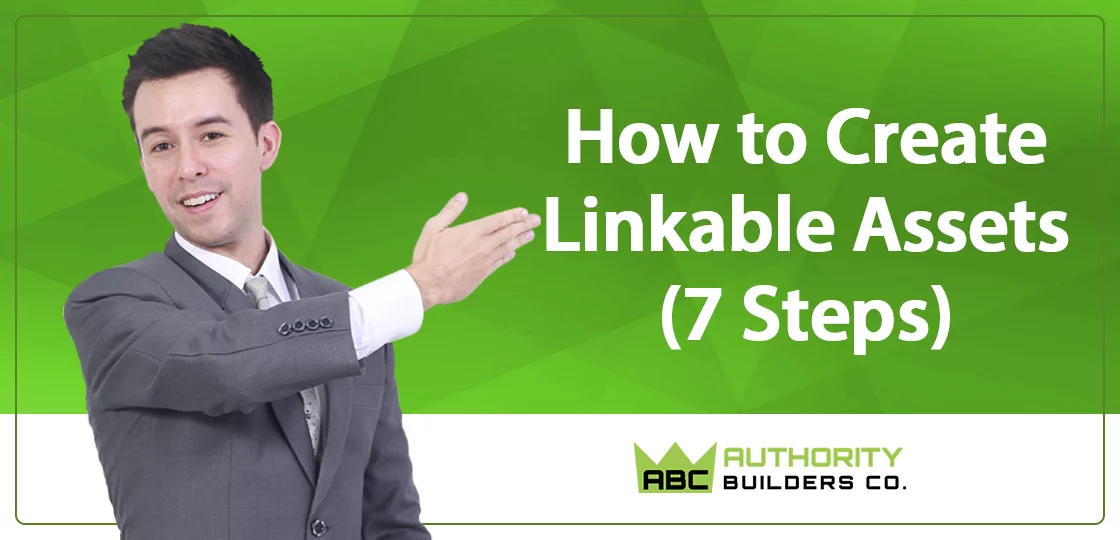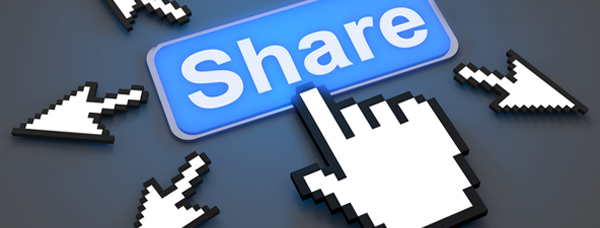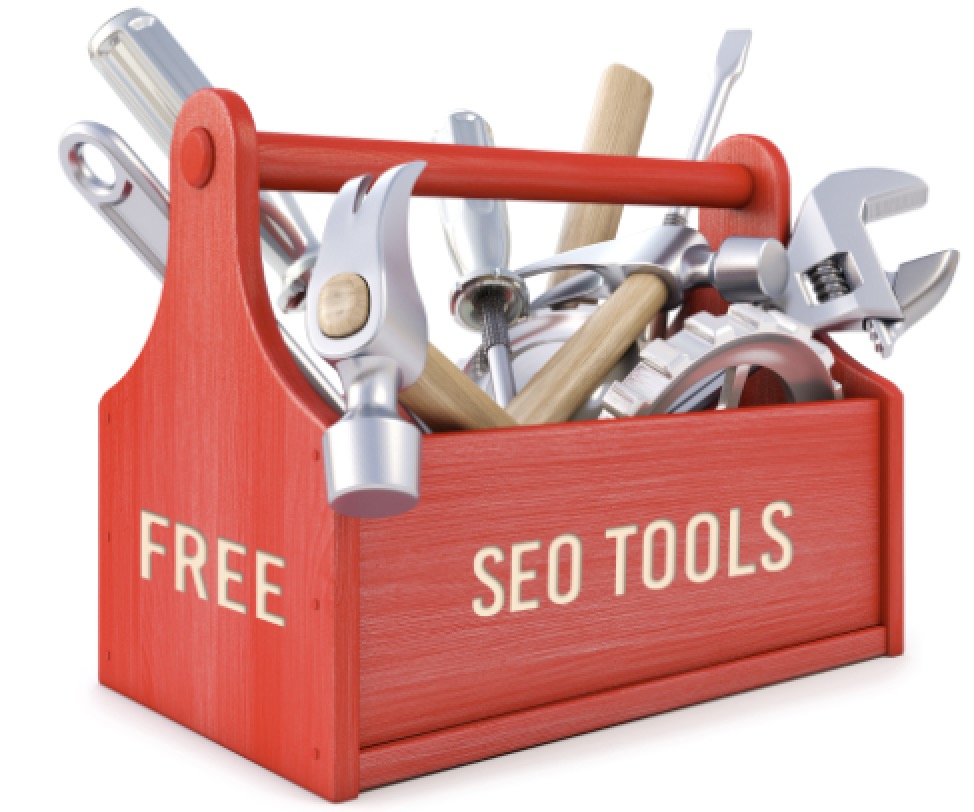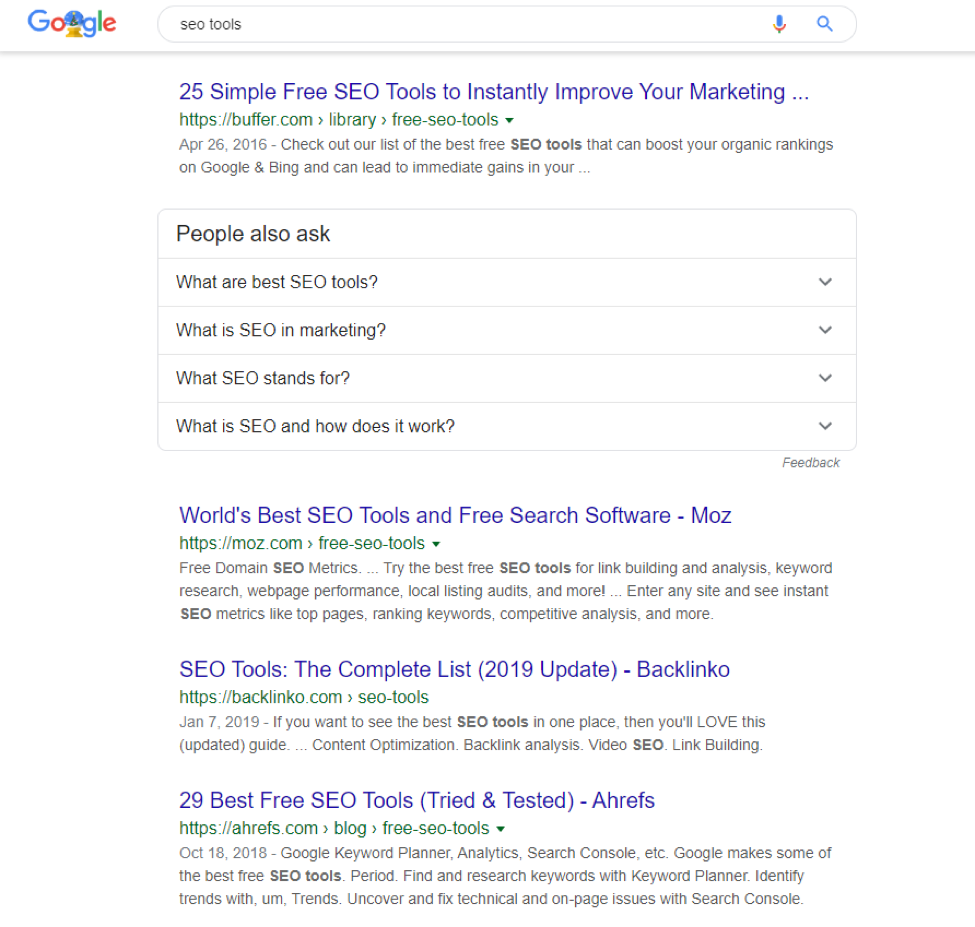
Plenty of websites are struggling to earn the backlinks they need to boost their rankings.
Do you know the biggest reason why? It’s because they’re not creating anything worth linking back to, and it’s seriously slowing down their journey to online success.
That’s why I created this guide—I’m tired of seeing website owners pour their time and resources into SEO, only to come up short because they didn’t pay attention to the #1 rule when it comes to attracting natural links: content is king.
So if you want to stop wasting your time and money, and if you want to get those highly coveted editorial links, the best way to do it is to create content people actually want to see and share.
In this article you’ll learn:
- What linkable assets are
- How to utilize linkable assets in your link building campaigns
- How to share your linkable assets
- How to track your link building progress
Let’s get started…
What Are Linkable Assets?
First things first, you need to understand what makes linkable assets different from your run-of-the-mill, regular content.
Most websites have content. Maybe they post a blog article once a week or share a video here and there. Hell, even the About Us section of your website is considered content.
But according to Backlinko, out of the millions of blog posts that they analyzed, a whopping 94% of them don’t have any backlinks at all.
This means that…
Countless websites are putting out content that nobody cares about.
Nobody is sharing their content, and all of their hard work didn’t even earn them a single backlink.
This means there’s plenty of content floating around the internet, but only very few (relatively) linkable assets.
A “linkable asset” is any piece of content that other people find worth linking back to.
Linkable assets attract backlinks, shares, and citations because they provide something of value to your target audience.
It could be a unique take on a current issue, a new solution to an old problem, something interesting, exciting, controversial, educational, entertaining, or all of the above.
Linkable assets can take many forms, such as infographics, guides, case studies, and more. You can use any medium that works for you and the topic you’re trying to tackle.
BONUS: FREE Guide on How to Acquire High-Quality Links
What linkable assets usually aren’t: product or service pages, commercial sections of your site, and other pages that don’t really do much for your readers (except promote your brand).
The bottom line? Linkable assets are linkable precisely because they offer something of value. If something is useful, educational, or even just entertaining, then you’ve got a good linkable asset in your hands.
Why Linkable Assets Are An Asset To Your Business
Of course every business would love to go viral, but linkable assets are more than just a golden ticket to your 15 minutes of internet fame. In fact, linkable assets are so powerful that it can benefit your business in a multitude of ways. And considering how much time, money, and effort it takes to create a linkable asset, it better!
Here’s a snapshot of how linkable assets can give you a return on your investment:
Linkable assets increase traffic to your website. Creating something helpful and relevant to your niche is a great way to drive traffic back to your website in droves. After all, if your linkable assets are just that good, then people will seek out more content from you—and, as a bonus, they’ll probably check out your other pages too.

Linkable assets increase your reach, visibility, and brand awareness. If someone links to your content on their own website, then you’re reaching an entirely new audience. The more great content pieces you create, the more your reputation will grow. Now, that’s how you become a thought leader within your industry and edge out the competition!
Linkable assets build your website authority. A backlink is a vote of confidence. It tells Google and other search engines, “Hey, this page is extremely helpful and worth boosting.” Each backlink you get is plus points to your domain authority, which in turn helps you rise through the search engine results page rankings.
Types Of Linkable Assets
Studies & Research
Not every business is capable of conducting their own research. It usually takes a lot of time, a lot of money, and a lot of manpower. So if you don’t have the resources or the people to create and publish original studies, don’t worry, there are still many other kinds of linkable assets that you can work on.
But if you can publish your own research, do it—original data is super linkable. You’ll get links from other people in the industry who want to share your findings, and you’ll get links from people using your research to back up an argument.
And the best part?
Your research provides original information and a unique perspective that your competition doesn’t have.
A great example is Ahrefs case study on statistics link building where they wrote a piece of content on “SEO statistics” and ran ads to it to boost it.
Just look at how many links its gained.

You don’t even need very intensive studies, either. There’s a lot of valuable insight to be mined from personal experience, case studies, and anything else that you have quantifiable and measurable data on.
Free Tools
Free tools and online calculators are another great way to attract tons of backlinks. Plus, with all of the software available (and affordable freelance developers on Upwork), it’s quite easy!
Before you set out to create a tool, ask yourself the following questions:
- Is there a process or formula that people in your industry rely on, but it’s too complicated or time-consuming to do it on your own? This is a good way to determine what kind of tools you can make.
- Do you have the time and skill to develop the tool yourself? Or are you going to outsource it to another developer?

What are some examples of good online tools? Take some inspiration from HubSpot’s Advertising ROI calculator, Third Love’s Fit Finder interactive tool for finding the right bra, and this color scheme generator.
Videos
When it comes to SEO, long-form content is usually “rewarded” more often with higher rankings. This is because longer articles tend to be more in-depth, well-researched, and useful to readers.
But not everybody has the patience for long articles all of the time. Plus, some things are just too complicated to be explained through just text.
This is where videos come in. Videos can cram a lot of information into a short amount of time, thanks to a combination of words (audio narration/voiceover) and visuals. You can use videos to explain a complex concept, describe a process, instruct people on how to do things, or even just entertain—the possibilities are endless.
Awards, Rankings, & Other Roundups
Articles like “Top 10 Burger Joints In Manhattan” or “The 20 Best Ad Campaigns Of 2021” are extremely powerful linkable assets for a few different reasons.
One, people love lists and rankings because they get a ton of information in one place.
Two, readers aren’t interested in the mediocre—they want to know which brands to trust, buy from, and listen to.
Three, the individuals or companies who make the list will want to show it off, increasing your reach and earning you that all-important backlink.
BONUS: FREE Guide on How to Acquire High-Quality Links
Here’s an example of how this type of linkable asset works…
We made an article called “Link Building: 30+ SEO Experts Share Their Secrets”: a listicle style article with opinions from 30 SEO experts. It’s accrued 41 backlinks from 26 referring domains.

The tricky part about making awards or rankings is that you need to have some level of credibility or authority already established to really reap the benefits from this type of asset. Awards are really only as meaningful as the award-giving body, and rankings given by a small business are less trustworthy (and newsworthy) than rankings given by an industry leader.
Of course, if you’re a new or small business, that doesn’t mean that you can’t publish your own top 10 list! Just make sure that your list is well-researched and based on what people who are trusted authorities within your niche are saying.
Guides, Tutorials, & How-To’s
Because there’s no shortage of people who want to learn, there’s always going to be demand for well-written, thorough, and easy-to-understand guides.
Tips/tricks, how-to’s, and other usually short articles are great to share on their own. But if you really want to milk your linkable assets for all their worth, then a “definitive” guide or resource is the way to go.
By “definitive”, I mean those guides that cover literally everything you need to know about a particular topic (like this one I created for anchor text optimization).

It’s much easier to read and link to one “ultimate” guide than it is to go through dozens of different pages, websites, and blogs just to get all the information you need.
A word of caution: if you’re going to make a definitive guide, you need to be an expert on what you’re talking about. Sure, you could always do research, but writing that comes from personal experience and knowledge is always going to be more genuine, more unique, and more helpful for your readers.
Coined Terms
A “coined term” is any term that you create to describe a method or concept within your niche. If you can successfully coin a term and it gains actual traction, then getting backlinks isn’t going to be much of an issue for you. In fact, you’ll probably be drowning in backlinks from all of the people referencing your work!
But of course, getting your coined term to be popular enough to be linked to is the real challenge. Through guest posts, keyword alerts, and a strong marketing push, popularizing your term is entirely possible.
Just think about the term “Skyscraper Technique”, created by Brian Dean of Backlinko. The SEO industry adopted it, and now the original page for it has a ton of backlinks—and it continues to get even more every month.
As you can see, the original article that coined the term has gained a whopping 11,600 backlinks from 2140 referring domains.

Other Interactive Assets (Polls, Quizzes, Etc.)
While interactive assets are similar to tools and online calculators in theory, there’s just too many different kinds of ‘interactivity’ not to get its own category. Interactive content is a great way to attract traffic and backlinks, especially if you take your time to execute it right.
I’m not talking about creating BuzzFeed-style fluff quizzes, I’m talking about creating real, value-adding polls, quizzes, and other tools to enhance learning. This doesn’t mean that you can’t be humorous or entertaining, it just means that your priority should be providing useful information in a unique format.
An added bonus? You can often mine this particular asset for data about your target market, helping you improve your business.
How To Create Incredible Linkable Assets
1. Identify & Understand Your Target Audience
One of the first things you need to do before anything else is to determine who you want your linkable assets to cater to. In fact, this step is so crucial to success that “understanding your audience” doesn’t just apply to creating linkable assets, it also applies to any marketing effort… period.
BONUS: FREE Guide on How to Acquire High-Quality Links
If you know who your audience is, you are in a much better position to create content that will actually get backlinks. Take your time in identifying what your audience’s interests, likes, dislikes, challenges, and pain points are—then use that information to narrow down topics, choose the right medium, and market your linkable asset.
2. Figure Out Search Intent & What Your Competitors Are Doing
You can find relevant topics to create content around through competitor research and trend analysis.
For competitor research, plug in the keyword you want to rank for in Google.
Then, check out the top three or five hits on the page—what kinds of content are these?
If they’re all videos, then you should make a video.
If they’re all in-depth articles, then that might be the best format for your own linkable asset.

Say you wanted to create a linkable asset for the keyword ‘SEO Tools’. When we take a look at the SERPs for the term ‘SEO Tools‘, we can see that the large majority of the top results are all listicles.
So, taking that into account, the best linkable asset format for this keyword would be a listicle.
New and trending topics are another great source of inspiration. Check Google Trends, social media, and other trend-spotting tools to find out which keywords are in high demand.
3. Pull From Multiple Sources For Information
Whether you’re creating a video or conducting your own research, chances are you will have to turn to other websites, books, films, and studies for additional information. It’s important to pull from as many sources as possible, for two major reasons.
The first reason is that collating information from different sources means that you’ll have a more complete and thorough understanding of your subject matter, and it will be easier to write your own expert take. The second reason is that you’ll be better able to identify any gaps in knowledge that current published content isn’t filling (and that you have an opportunity to fill).
4. Create Content With S.U.C.C.E.S.S.
The S.U.C.C.E.S.S. framework was created by Dan and Chip Heath and introduced in their book Made to Stick. While this model wasn’t designed specifically for linkable assets, it was created to help people communicate more effectively, especially when it comes to business or sales.
According to the S.U.C.C.E.S.S. model, these are the elements that your linkable assets should have to resonate with your audience and really “stick”:
Simple: Break your idea down to its core concept and don’t try to tackle too many things at once. Structure your thoughts simply but logically and use easy-to-understand language.
Unexpected: Don’t say something that people already know. Surprise them with a unique idea or innovative execution. Create curiosity and grab their attention!
Concrete: Talking in vague abstracts only muddles your message. Use concrete images, definitions, and examples to illustrate your point and make it easier to grasp and remember.
Credible: Back your claims up with proof, statistics, or even just personal experience and anecdotal evidence. If your readers can test out your ideas and come to their own conclusions, even better.

Emotional attachment: Emotions play a huge role in our decision-making process and memory. Appeal to the wide range of human emotions to get people reading, clicking, and converting into a customer.
Stories: Narratives are extremely powerful because they give context (and emotion) to otherwise disjointed ideas. This allows us to make sense of things and inspire us to take action.
As always, focus on creating high-quality content instead of a lot of content. If you are more thorough and more accurate than your competitors, then chances are that you will earn the link, not them. It will take a lot of time and effort, but the results will be worth your money and energy many times over.
6. Design it to Look Beautiful
The prettier your piece, the more likely someone is to link to it.
Don’t sleep on this. It matters more than you think.
In this day and age, busy people sometimes don’t even have the time to read your article, but they’ll make a linking decision based on how your article looks.
Looking for an example of a well designed piece? Check out this lead generation article by Hook Agency.
The article has it all:
- Custom graphics
- Social proof
- Responsive design
- Call-outs
- Multi-media
6. Share Your Linkable Asset
You’ve probably heard the saying “great content shares itself”. And this is true to some extent—if you make linkable assets that people care about, then they’ll most likely share it with the people they care about. But you can’t get those clicks (much less those backlinks) if no one knows about the amazing piece of content you created.
BONUS: FREE Guide on How to Acquire High-Quality Links
Gain exposure by sharing your content as much as possible. There are many different ways to do this, such as posting on your blog, guest posting, sharing it via email list, putting up Facebook ads, reaching out to influencers and other website owners, and more.
7. Track Your Progress
Just because your linkable asset is out there in the wild, it doesn’t mean that your work is over. In fact, what you do after you’ve finished and shared your content is just as important as creating it! After all, how can you truly say that your linkable asset was “great” and “effective” if you have no data to back that up?
Tools like Ahrefs makes this easy. You can check how many referring domains and backlinks any single page has received, as well as the overall dollar value of the traffic you’ve gotten.
For example, here’s a report of a keyword cannibalization article I created:

I got 46 backlinks from 40 domains and it cost me only my time to create this asset.
Here’s a list of its referring domains. Not too shabby:

8. Regularly Update Your Content (Bonus)
Some industries are super fast-paced, and things change all the time. If this sounds like your industry, your “definitive” guides and “ultimate” how-to’s could be outdated in just a few months! Stay on top of your linkable assets by regularly updating your content when applicable.
It’s always going to be easier to update your main resource materials than it is to create entirely new ones. In addition to that, you can always re-promote your linkable assets and make them worth even more backlinks.
The Secret To Backlink Building
It doesn’t matter how much effort you put into link building, if you don’t have anything worth linking to, then you’re not making the most out of your backlinks. Creating a linkable asset is one of the best ways to get more backlinks and citations, but you have to do it right.
At this point, you should be armed with the following knowledge:
- What linkable assets are and how they can be a valuable tool in your link building arsenal
- 7 unique linkable asset strategies to implement into your next link building campaign
- How to share your linkable assets to gain the maximum number of backlinks
- How to track the link building progress of your linkable assets using tools such as Ahrefs
Now it’s up to you to put that knowledge to use. If you need help promoting your linkable assets, Authority Builders Co. has your back.
Got Questions or Comments?
Join the discussion here on Facebook.
